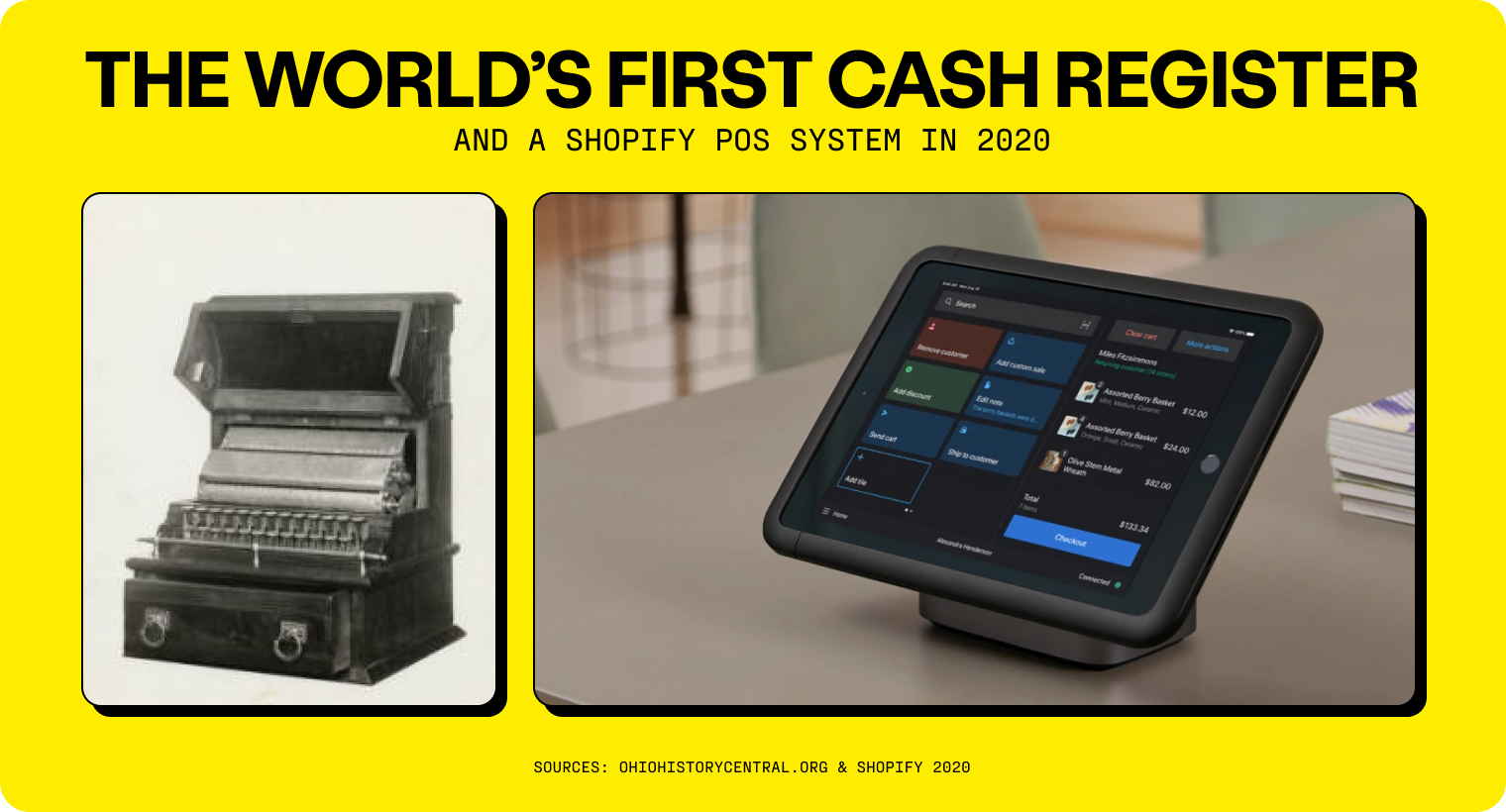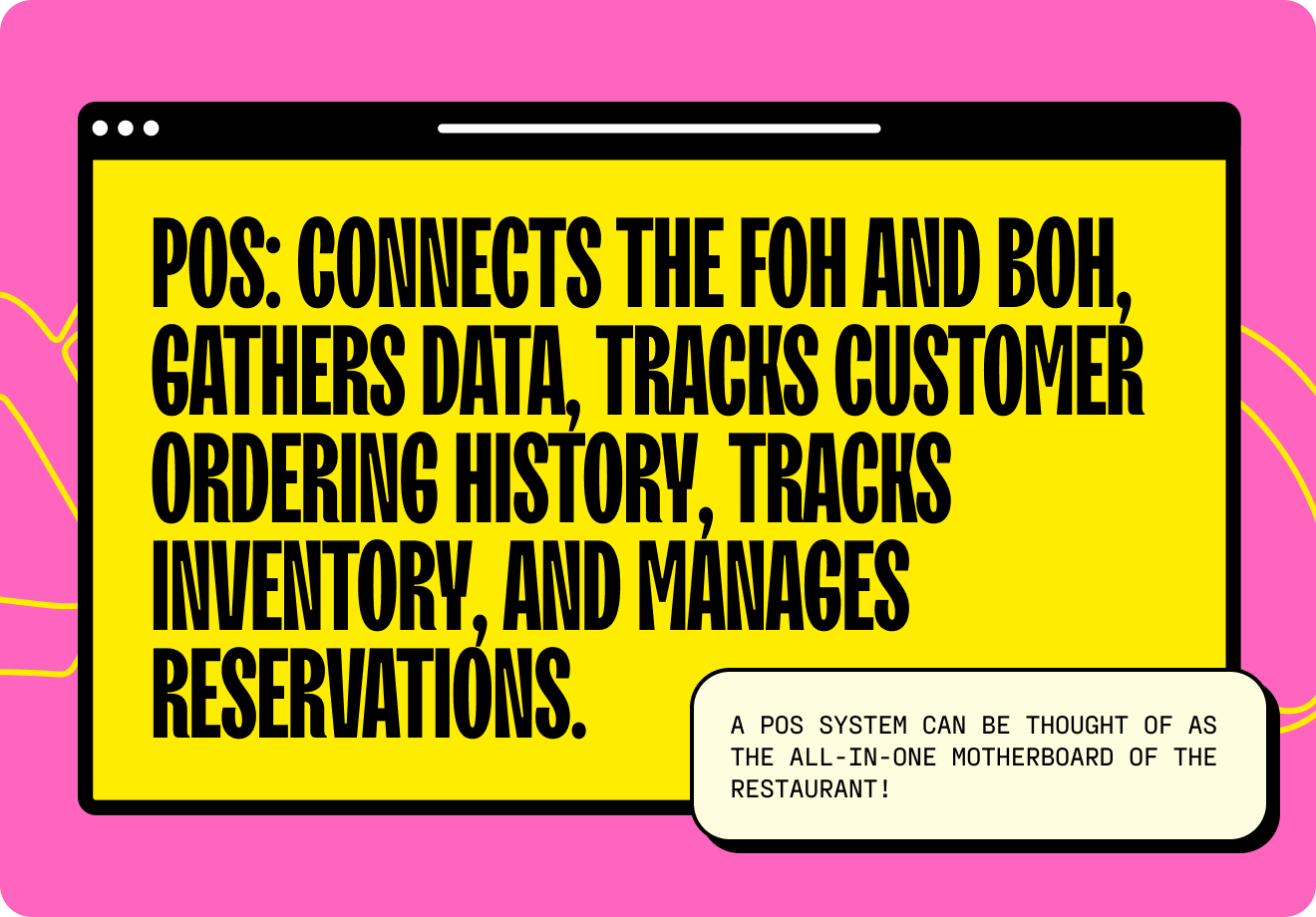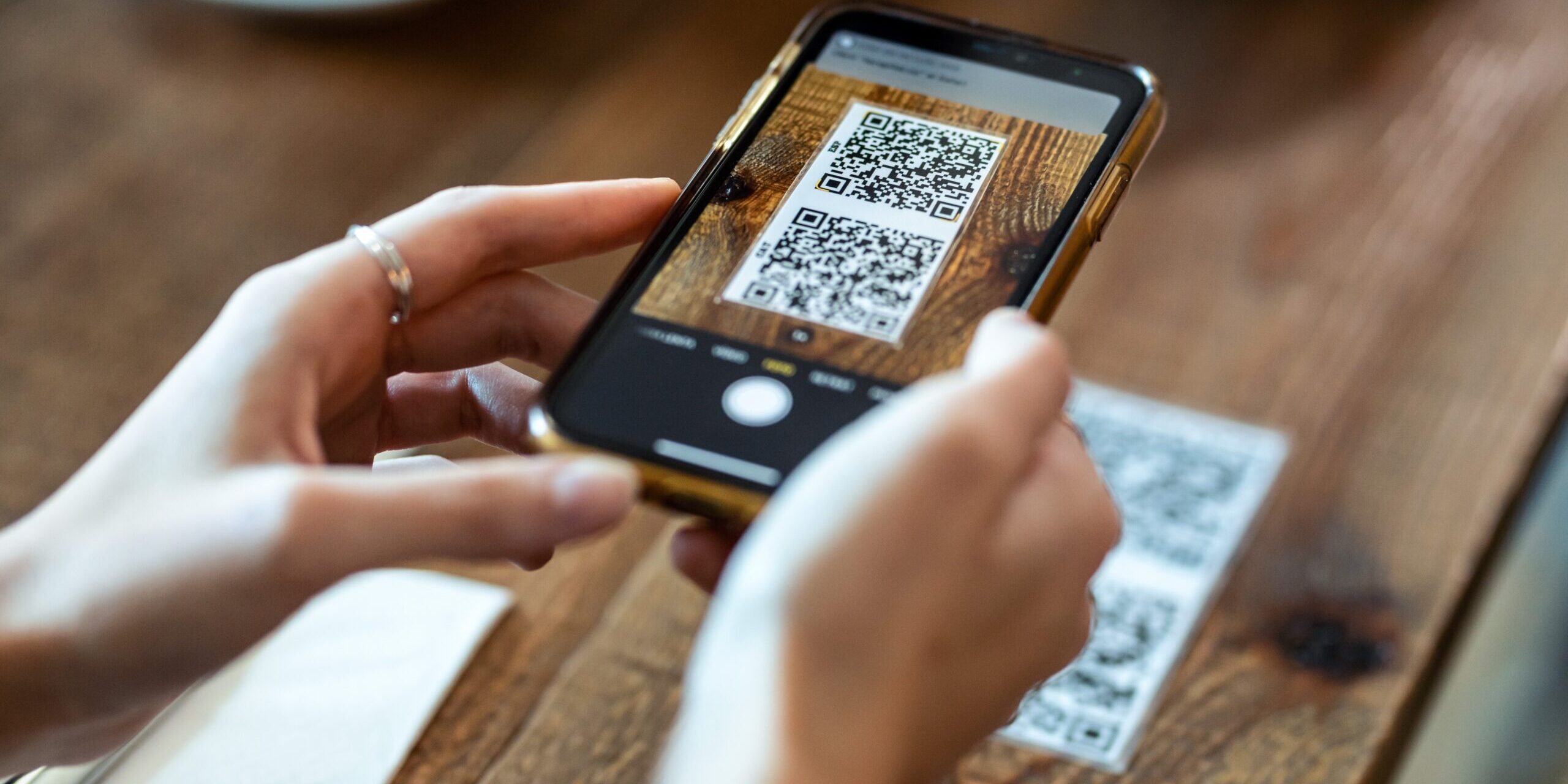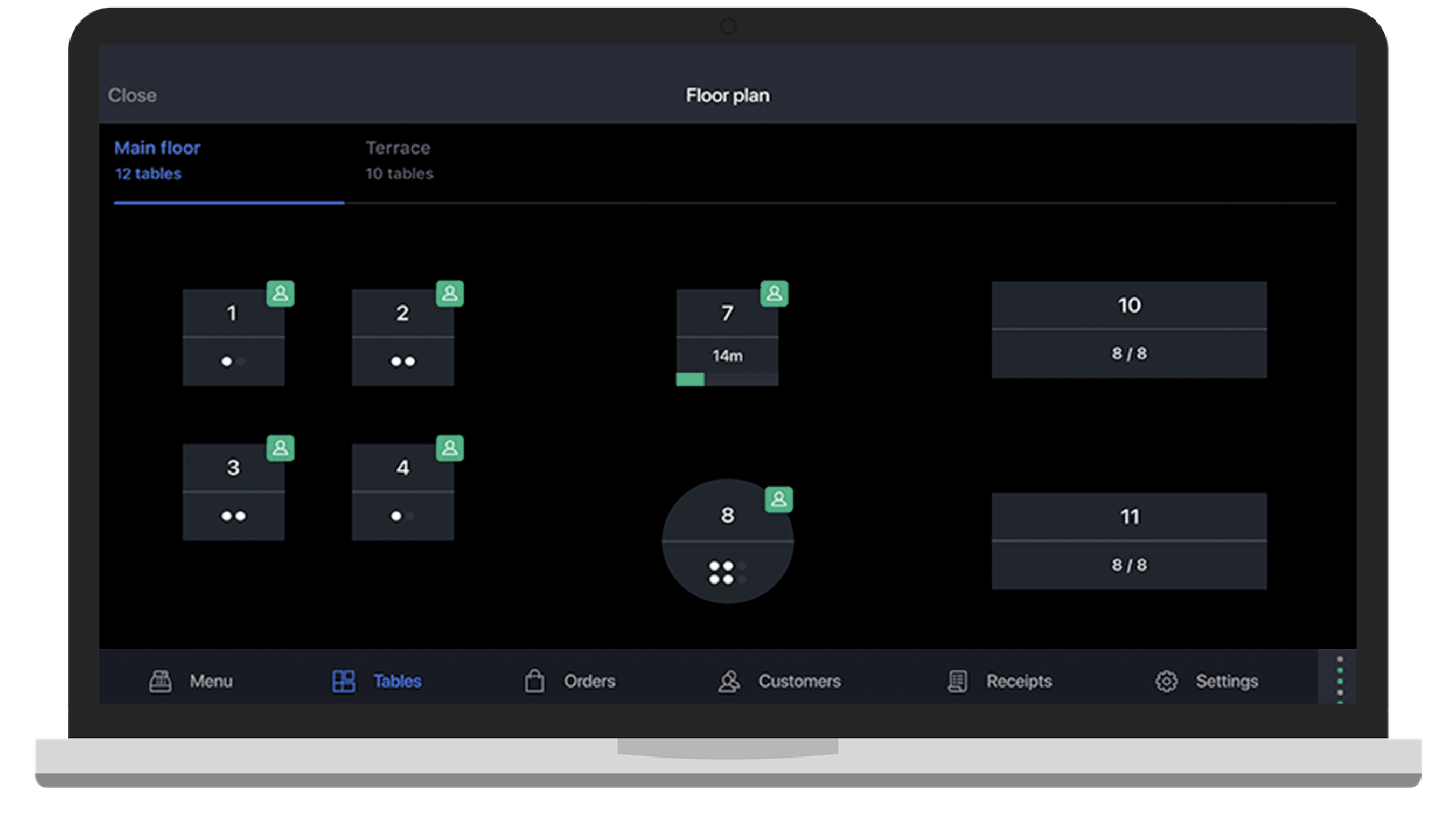A POS system is a tool that brings homeostasis to your restaurant.
Share
- Jump to:
When opening a restaurant, you will need to do a lot to commence operations. A building or commercial kitchen space needs to be chosen and rented. Kitchen appliances, cookware, dining room tables and chairs, and various tools need to be purchased. Staff will need to be hired and trained. Although it may not first come to mind as a necessity for new restaurants, a crucial, game-changing tool that all restaurants need to have is a modern POS system.
The most straightforward definition of a restaurant point of sale (POS) system, also called point of purchase, is simply where customers are rung up for their purchases. In the past, the POS system most commonly referred to the cash register and cash drawer that customers would come up and pay at. This set-up has been modernized, and now most POS systems are digital and composed of both hardware and software.

Pictured: The world’s first cash register, invented by James Retty in 1897. Source: OhioHistoryCentral.org // A Shopify POS system in 2020. Source: Shopify
There is more than what meets the eye with POS systems. It may seem like just a tool to take orders and process payments, but it is so much more than that. A POS system can be thought of as the all-in-one motherboard of the restaurant. It connects the FOH (front-of-house) and BOH (back-of-house), gathers data, tracks customer ordering history, tracks inventory, and manages reservations.

Customers have begun to return to restaurants after the height of the pandemic, and after becoming accustomed to ordering online food delivery, they will likely expect the same streamlined and efficient service when dining in. Approximately 52 percent of surveyed customers want to see that restaurant technology makes ordering and paying easier.
Rather than relying on clunky old computers and physical order sheets to operate your restaurant and serve customers, POS systems digitalize and simplify everything in your restaurant.
There are many POS systems to choose from, but the best option for your restaurant will likely depend on the size of your business, type of establishment, budget, and desired features.
Features to Consider When Choosing The Best Restaurant POS System
The day-to-day operational aspects of your restaurant can be straining and chaotic. It can be difficult to promote cohesion between BOH and FOH staff. Peak hours can cause communication breakdowns, delayed and missing orders, and customer frustration.
After the start of the COVID-19 pandemic, 87 percent of restaurant operators, owners, and managers reported that technology has been crucial for their business’s survival. With so many external factors out of your restaurant's control (like the pandemic, supply chain issues, and inflation) the best your restaurant can do is have a firm grasp on internal factors. Restaurant POS systems give operators and owners the opportunity to manage these internal factors at the tips of their fingers.
With many POS systems on the market, it can be overwhelming to choose one. Luckily, many systems are made specifically for different sizes and types of establishments, and most are customizable for your restaurant business needs and budget. Before even beginning to research your hardware options, make a list of features desired for operating your restaurant.

Contactless payments can be completed on a customer’s phone with the addition of a QR code at the table. Source: Focus POS, 2022
Above all, a point of sale system should increase efficiency in your restaurant business. It should make every operational step intuitive and simplified. When researching POS systems, here are some features to look for.
CHECK OUT THIS ARTICLE:
Easy interface and quick checkout.
In the age where digitization and automation reign supreme, customers have the expectation of a quick and easy checkout. Digital POS systems can be used on iPads, tablets, and phones, and therefore, orders and payment transactions can be completed anywhere in the restaurant. Digital POS systems make it easy for customers to quickly swipe their card, select a tip, and sign at their table or at the counter. Digital POS systems on iPads and tablets can be dropped at a customer's table for payment to minimize contact.
Your restaurant can even provide a completely contactless experience by selecting a POS system that offers a feature that allows customers to pay from their own mobile phones via a QR code. Note that the “pay from the table” feature is often an add-on that increases the pricing of monthly POS software fees.
Easy to manage and use for workers.
Staff, managers, and owners alike should be able to quickly grasp how the system works. Choose a system that is intuitive and can be easily trained. Many POS system companies offer demos of their product, and this is how you can get a glimpse into the ease of use. A POS system should make your staff’s life easier, not more complicated. Consider how often your servers and FOH staff will use the system and take their input and preferences into consideration.
Online ordering integrations.
Since the start of the pandemic, restaurant owners have increasingly depended on online orders to stay afloat. Since 2020, online ordering has become the “new normal”, and this habit will likely continue to remain popular. Some POS systems include the ability to allow customers to order online on the restaurant’s website; however, this feature often costs more. If a POS system does not offer an online ordering feature, it should be able to integrate with an online ordering system.
Ordering online through a third-party platform is one option, but 70 percent of customers actually prefer ordering directly from a restaurant so they are able to directly support a local business. Lunchbox is one system that allows restaurants to own their online ordering system, rather than relying upon third-party platforms.
Inventory Control.
Having to throw out food can be a huge waste of money for restaurants, and therefore, it is crucial that restaurants consistently monitor inventory. On top of this, wasting food is incredibly unsustainable. At times it can feel nearly impossible to manually count how many potatoes or pounds of lettuce you have in stock. Not to mention, manual inventory is time-consuming and is also subject to human error. By using a POS system to keep track of inventory, your restaurant is becoming more sustainable, and saving both money and time.
Reporting and analytics.
For restaurants, data is gold. Having access to metrics and key performance indicators can be the difference between making it or breaking it as a restaurant business. POS systems gather data on peak orders, popular menu items, happy hour performance, customer order history, total food and drink sales, and more. Furthermore, this data should be easily understood by managers and owners in order to make informed business decisions.
Check Out This Guide:
Easy to set up and configure menu.
Once you have chosen a POS system, you’ll need to enter your menu along with modification options. This may be a time-consuming process initially, but after this is complete, it should not be a hassle to update your menu as needed. Unfortunately, some POS systems take several minutes to update, or may even require a system restart to show changes. Ideally, changes can be made when needed and updated in real-time. Be sure to test this feature out and ask questions about menu updates as you are researching.

A screenshot of what Lightspeed’s table management feature looks like to the user. Source: Lightspeed, 2022
Table management and reservations.
It’s never fun dealing with a horde of hangry customers waiting to be seated. Hosts and hostesses often guess the wait time of how long it will be until a party is seated, and when they are incorrect, this increases customer dissatisfaction. Often, reservations are taken on the phone and then written down on paper or in a planner at the hostess stand. With the loud background noise of a restaurant, there is the possibility of the reservation being misheard. Using a digital POS system, staff can conduct table management and reservations on one screen, and customers can even make reservations online on your restaurant’s website.
Integration capabilities.
Ideally, the POS system you choose should be able to integrate seamlessly with the kitchen management software already used by your restaurant. Luckily, most do, but it is still important to check that your current systems are compatible with your new system. For example, POS systems like Toast, Brink, and Revel integrate with Lunchbox. Some companies will require you to buy their hardware in order to ensure seamless integration of its POS software. If this is the case, this will cost your restaurant more money upfront, so be mindful of your budget.
Training and customer support.
As previously mentioned, whatever POS system you choose should ideally be intuitive to use. However, if you do have any issues or questions arise, the company you purchase your POS system from should offer customer support. Preferably, the company also offers a demo of its product so restaurant operators can first test it out and ask questions before committing to it. Pay attention to how customer service responds while asking initial questions; this is a good indicator of how they will respond in the future when you are in need of assistance.
Cost.
When researching different POS systems, there are several different costs to be aware of and consider, including upfront costs, monthly software fees, the cost of hardware, and transaction fees.
Most companies offer software for POS systems at different pricing tiers. Higher tiers will include additional features and functionality. The lowest tier might be great for a small, single-location cafe, while the highest tier is best for a multi-site full-service restaurant concept. Some companies even offer introductory promo deals like $0 upfront or $0 per month for a limited time, or free software with the purchase of its hardware.
On top of the monthly software fees, POS systems will also charge for customer transactions. The per-transaction fee varies amongst companies, so it is important to check how much this fee is and consider how much this will add up over time.
Some companies require your restaurant to purchase hardware that is compatible with its software, but other systems have the ability to integrate with your business’s existing software.
The Importance Of Using One Of The Top Restaurant POS Systems
A POS system may not be the first thing that you purchase for your restaurant, but nevertheless, it is certainly one of the most important ones you will use to increase efficiency within your restaurant business. The right POS system can streamline online orders and in-person transactions, monitor inventory, manage reservations and seating, accommodate loyalty programs, and gather real-time data. With so many different restaurant POS systems to choose from, it is critical that restaurant operators do their fair share of research prior to choosing one. Having tools, like a POS system, gives your restaurant a competitive edge and offers hungry customers the streamlined service they crave.